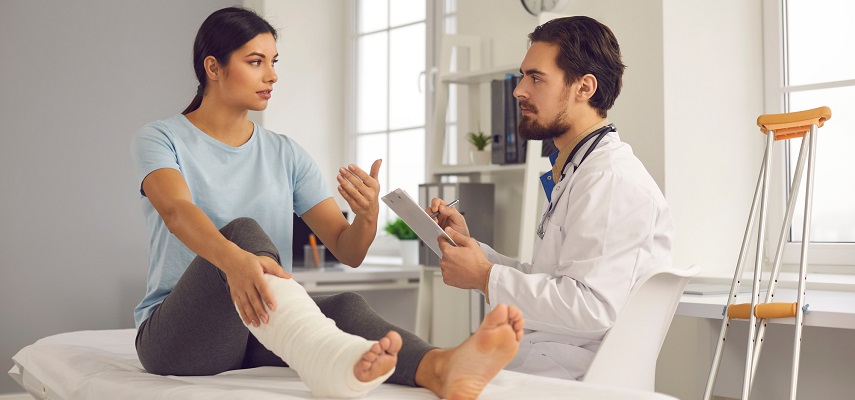
Limb injuries are notably prevalent in workplaces, especially in the construction, manufacturing, and logistics sectors, where physical labor is the norm. These injuries range from minor cuts, sprains, strains, or tears to more severe fractures or amputations.
Furthermore, repetitive strain injuries, often affecting the upper limbs, are increasingly common in office environments due to prolonged computer use.
Understanding how to manage limb injuries from workplace accidents effectively is critical. Immediate, correct responses can mitigate long-term damage and speed up recovery time.
However, it’s not just about first aid. It also involves knowing your rights, options for compensation, and rehabilitation strategies. This guide outlines practical steps for handling these situations to ensure your path to recovery is as smooth as possible.
1. Seek Schedule Loss Of Use Compensation
Firstly, it’s crucial to be familiar with your rights for compensation. Schedule Loss of Use (SLU) benefits are designed to compensate for permanent physical impairments from workplace accidents.
The amount awarded is determined by the severity of your injury and its impact on the function of the affected limb. Once a medical professional deems your injury as ‘permanent,’ meaning it has reached maximum medical improvement and won’t improve further, they assign a percentage to indicate the loss of use of the injured body part. This percentage is then used to calculate your compensation per a schedule outlined in workers’ compensation laws.
Upon receiving a diagnosis of a permanent partial disability from your doctor, consider contacting an SLU workers comp attorney to assist in your claim. They can guide you in demonstrating how the injury has affected your ability to work, which is vital for receiving fair compensation.
2. Receive Immediate Medical Attention
The next step is seeking immediate medical attention. Regardless of the injury’s severity, consider the importance of prompt, professional medical care. It can prevent the injury from escalating and reduce the risk of long-term complications. Furthermore, timely medical care provides necessary documentation of the injury, which is crucial when seeking compensation later.
Treatments for limb injuries can vary depending on the severity and type of injury. For minor sprains or strains, the RICE method (Rest, Ice, Compression, Elevation) is often recommended initially. Pain relief medications can also be used to manage discomfort.
For more severe injuries, like fractures or dislocations, immediate medical attention is required, which might involve immobilization of the injured limb, surgery, or physical therapy for recovery. Rehabilitation exercises are critical for restoring mobility and strength. Occasionally, occupational therapy may be needed to relearn essential tasks or adapt to a permanent disability.
Always follow your healthcare provider’s advice and complete the entire course of treatment prescribed.
3. Participate Actively In Your Rehabilitation Process
Participation in your rehabilitation process is paramount to recovery. It begins with diligently following your healthcare provider’s recommendations, which may include a variety of therapies and exercises designed to restore function and strength. Regular attendance at physical therapy sessions and adherence to at-home exercises are paramount.
Additionally, open communication with your healthcare team is essential. Share your progress, voice concerns, and ask questions to understand your recovery path better. Emotional well-being also plays a significant role in recovery. Therefore, consider seeking psychological support, if needed, to cope with any stress or anxiety related to your injury.
Remember, each small step towards your rehabilitation counts, and your commitment to the process can make a significant difference in your recovery.

4. Promote A Safe Work Environment
After experiencing an accident, use it as an opportunity to advocate for safer workplace practices. Engage in constructive dialogue with your employer about the incident and suggest measures to prevent similar occurrences.
It might involve recommending updates to safety protocols, encouraging more frequent safety training sessions, or identifying areas within the workplace that could benefit from improved safety equipment.
Additionally, consider fostering an open culture of safety where colleagues feel comfortable reporting hazards and incidents. This collective vigilance can lead to a safer work environment for everyone. While advocacy might seem challenging, remember that these efforts can significantly reduce the risk of future accidents.
5. Plan For A Gradual Return to Work
Finally, when you’re ready to return to work, plan a gradual re-entry. Discuss a work plan that respects your current physical abilities with your healthcare provider and employer. It may involve flexible hours, adjustments in your job duties, or workplace modifications, allowing you to return to your usual responsibilities.
Listen to your body’s signals, and don’t rush the process. Your health and well-being are paramount. Communicating any discomfort or challenges you face during your transition back to work is vital. Remember, a gradual and thoughtful return will ensure your health and well-being remain paramount as you reintegrate into your professional life.
Conclusion
The journey to recovery after a limb injury at the workplace may be challenging, but each step you take moves you closer to your goal. Be patient with your progress and seek professional advice whenever in doubt. Taking proactive measures can protect your health and rights, ensuring your overall well-being and future productivity.


































